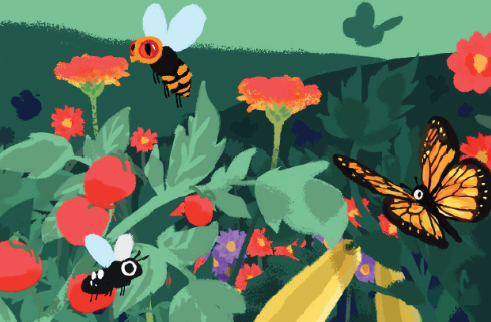Climate change is one of the main threats to pollinators, in addition to land use change, pesticide use, pathogens, and invasive alien species. Due to climate change, pollinators and flowering plants experience shifts in their range, activity period and phenology, leading to spatial or temporal mismatches. How does climate change affect pollinators? Due to climate change, pollinators and flowering plants experience shifts in their range, activity period and phenology, leading to spatial or temporal mismatches. In addition, climate change can affect species directly, especially those less tolerant of thermal stress, This especially affects bees from the genus Bombus, bumblebees. Bumblebees are adapted to low temperatures and most species do not tolerate extremely hot days, the frequency of which is increasing due to climate change.
Addressing climate change is important for biodiversity conservation, and at the same time, conserving biodiversity can play an important role in climate change mitigation and adaptation. Conservation of diverse pollinator communities is important for the resilience of terrestrial ecosystems against all environmental stressors, including climate change. Pollinators are essential for the survival of the vast majority of plant species, by maintaining their genetic diversity, reproductive potential, and by affecting plant survival in extreme weather conditions Research on agricultural plants shows that pollination helps plants tolerate thermal stress and that it has the potential to maintain the stability of plant populations.




